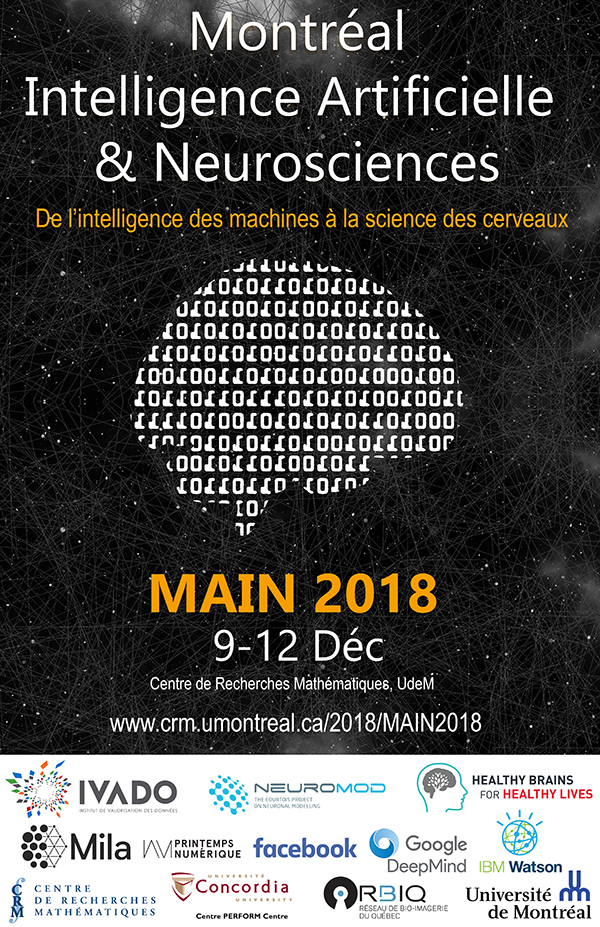IntroML

Landing page for scikit learn and nilearn tutorials, originally curated for MAIN 2018 conference
Machine learning for neuroimaging …
… with Scikit-learn and nilearn
Team: Pierre Bellec, Elizabeth DuPre, Greg Kiar, Jacob Vogel
Date: December 12th, 9h-17h. Breakfast/registration at 8h30.
Location: Amphithéâtre “le groupe Maurice”, CRIUGM
Summary: This course will be a hands-on/type-along introduction to machine learning for neuroimaging problems with scikit-learn and nilearn.
Morning (9h-12h30): introduction to machine-learning with scikit-learn
This part of the course will follow the scikit-learn chapter of the scipy-lectures, found here. This includes:
- Basic principles
- Supervised learning: classification, the example of handwritten digits
- Supervised learning: regression, the example of housing data
- Measuring prediction performance
- Unsupervised learning: dimension reduction and visualization
- Chaining estimators: the example of eigenfaces
- Parameter selection, validation, and testing
Afternoon (13h30-17h): introduction to nilearn
This part of the course will provide a general introduction to nilearn, building off of several example analyses.
Prerequisites
- Basic familiarity with Python would be preferable
- You will need enough space for Anaconda and all the course data (~4GB).
If you are already savvy with Python and just want a tl;dr summary, here’s all you need to know:
- Join the Brainhack Slack group and join the main-nilearn-2018 channel
- Download and install python with the full-suite 64-bit Anaconda distribution
- Download the data and remember where you store it!
- Download or clone the Intro to ML repository
- Install the necessary packages:
pip install -U nilearn scipy matplotlib scikit-learn jupyter pandas seaborn - Test everything by opening one of the MAIN-tutorial .ipynb notebooks and running the first few cells
For detailed instructions, view the full installation instructions.